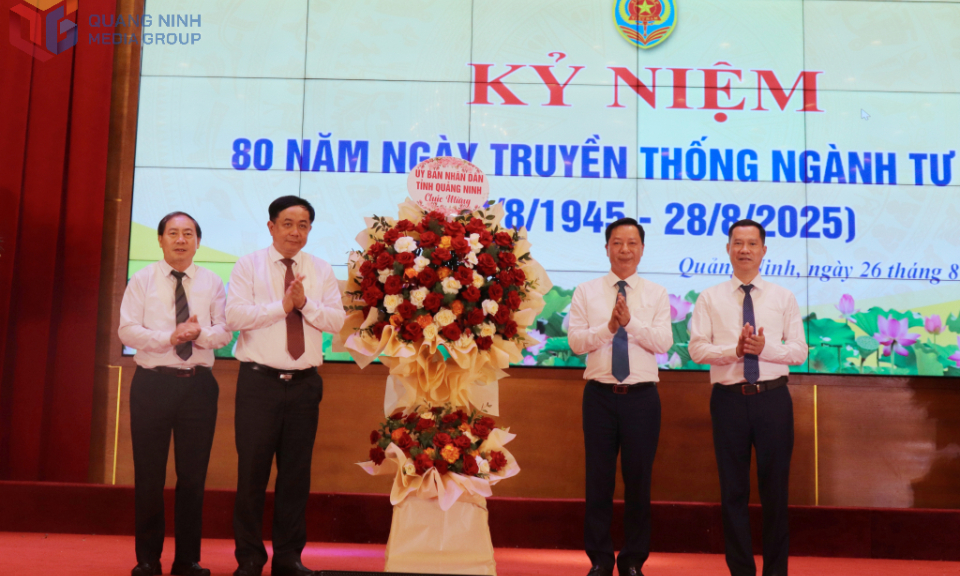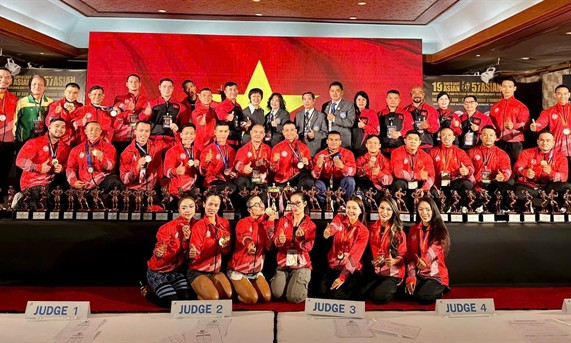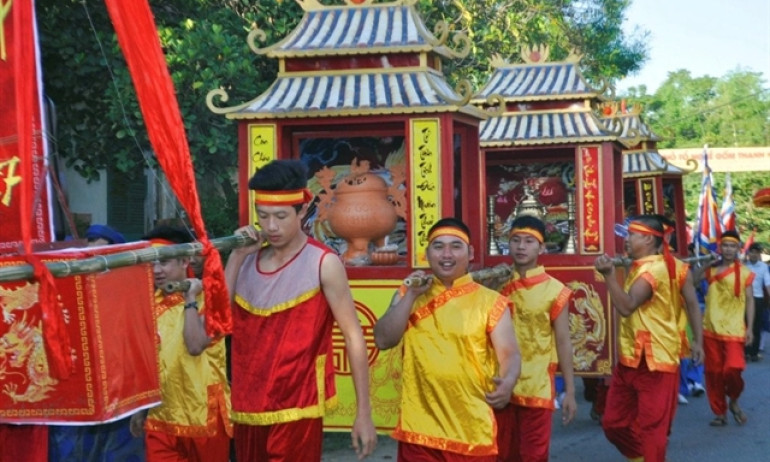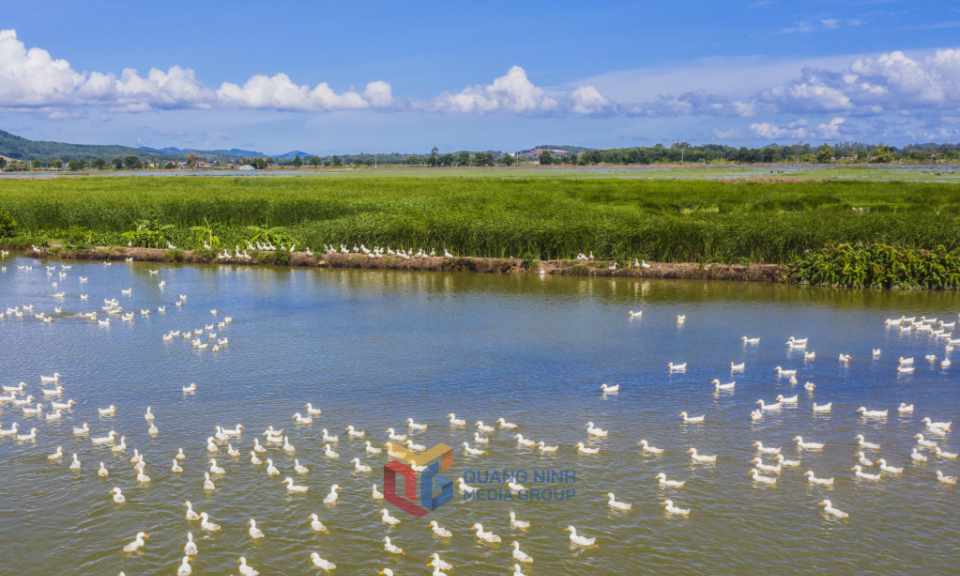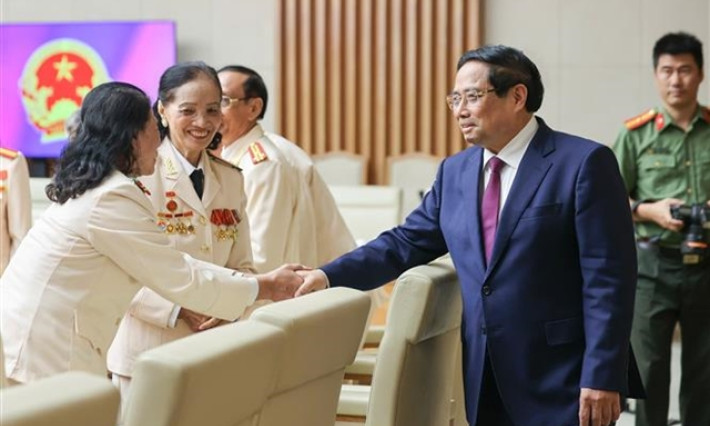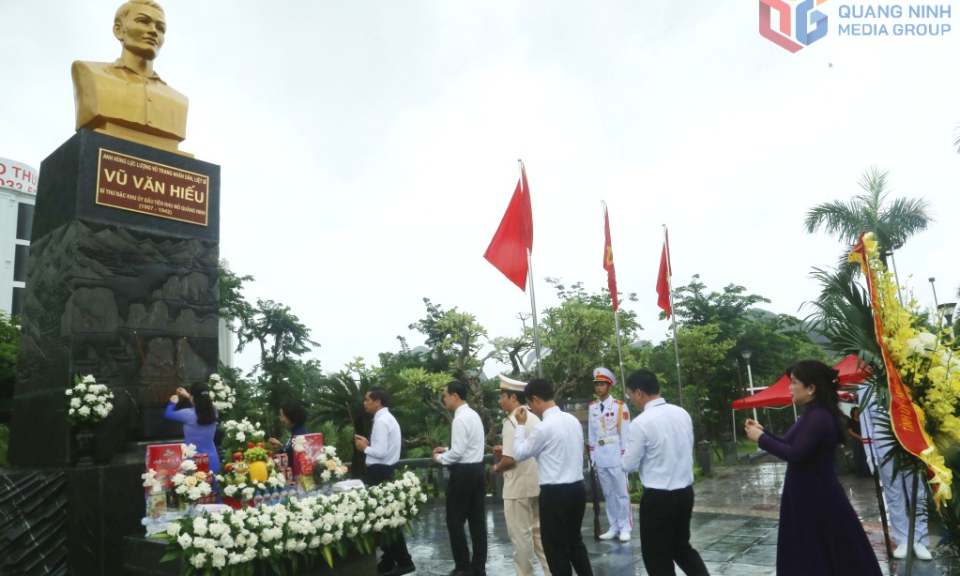Việt Nam’s journey from the dawn of Independence to the aspiration to soar
Eighty years after independence, Việt Nam has transformed from a poor economy with triple-digit inflation and limited global ties into the world’s 34th largest economy — a trusted partner of major powers, where people enjoy a life of stability and growing prosperity.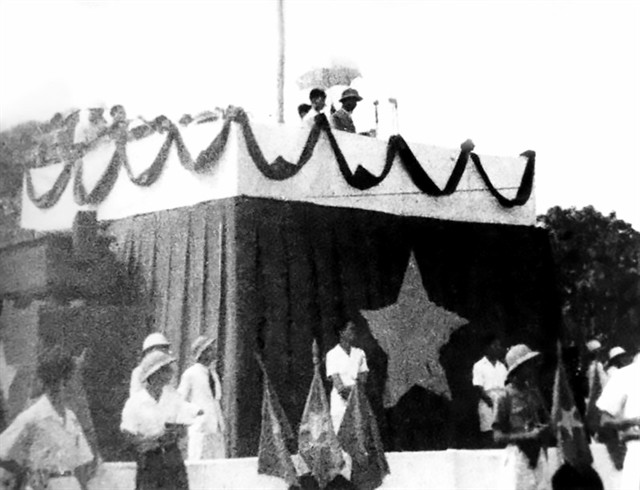
In the autumn of 1945, after decades shrouded in the darkness of slavery, the Vietnamese people rose to claim their independence. Over the past 80 years, the nation has traversed an extraordinary path with unwavering ambition towards standing shoulder to shoulder with the world’s most developed countries by 2045.
Crushed beneath colonialism and fascism, Việt Nam was plunged into the nightmare of the 1945 famine, which claimed the lives of more than two million people. Yet even amid that abyss of suffering, the Vietnamese chose the path of dignity and resistance.
On September 2, 1945, a new dawn broke as the Declaration of Independence rang out: “Việt Nam has the right to be a free and independent country.” That solemn moment marked the birth of a new, proud, self-reliant and unyielding Việt Nam.
Rising from the oppression
In his modest home on Điện Biên Phủ Street, Hà Nội, Colonel Nguyễn Hữu Tài, 96, former Deputy Director of the Army Training Department under the Ministry of National Defence, recalled the haunting images of famine victims from his student days in Kiến An, Hải Phòng.
“The famine reached its peak then. Waves of people from Thái Bình and Nam Định walked into Hải Phòng begging for food. They made it to the city centre streets, only to collapse and die stiff by the roadside,” Tài remembered.
The catastrophe began in 1944, when floods and dike breaches destroyed crops. In March 1945, the Japanese ousted the French army, imposing ruthless economic exploitation. They banned the transport of rice from the South to the North and forced farmers to uproot rice for jute cultivation to fuel their war machine. Taxes and levies became nooses tightening around every neck.
All this drove the nation into the catastrophic famine of 1945, which killed over two million people.
“In the northern provinces, entire families perished. Some clans were left with only a few survivors,” Tài recalled with pain.
Amid this despair, Việt Minh meetings burned bright with determination – often right in Tài’s own home. His elder brothers and teacher, all Việt Minh cadres, instilled in their students an unshakable faith in revolution.
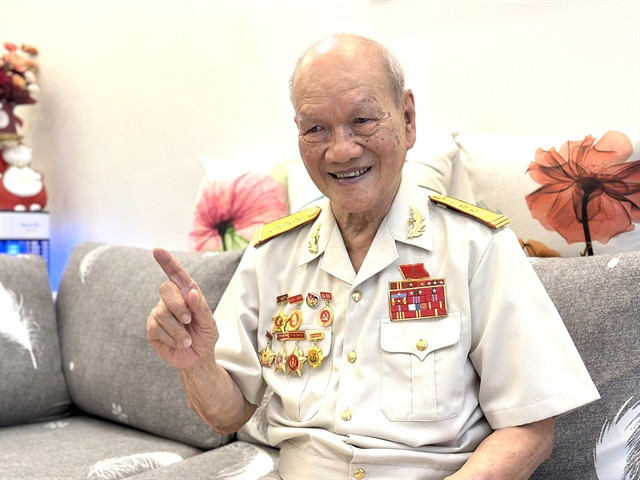
In August 1945, Tài joined the Việt Minh and headed to the Đông Triều resistance base, where he witnessed firsthand the patriotic fervour of all classes, especially youth and students. The entire Đông Triều–Kinh Môn region rose against the Japanese, seizing power in a tide of uprisings he still remembers by heart: Quảng Yên seized power on August 16; Hà Nội followed on August 19, and Hải Phòng on August 23.
“The air was full of excitement, determination, a sense of destiny unlike anything I’ve seen in my life,” he said.
On September 2, 1945, at the Hải Phòng Opera House square, tens of thousands gathered, straining to hear the Declaration of Independence broadcast from Ba Đình Square in Hà Nội. As the iconic revolutionary song Tiến Quân Ca (the Marching Song) anthem swelled and the red flag with its golden star fluttered high, Tài felt the weight of history lift.
“In that moment, I knew I was a citizen of an independent nation,” he recalled with quiet pride.
The historic autumn of Hà Nội remains etched in the memory of Đặng Quân Thụy, former Vice Chairman of the National Assembly, now 98. At just 16, a student at the prestigious Bưởi School in 1944, he joined the school’s Việt Minh Front.
“When the General Uprising began, I joined the sea of people answering the call of Hà Nội’s Party Committee. We shouted slogans, urging neighbours to merge into the growing procession heading for the Governor-General’s Palace,” Thụy recalled.
“Everywhere we carried the red flag with the golden star, people poured in to join us. The guards at the palace saw the unstoppable crowds, felt the burning spirit and withdrew. We marched in, took control and assigned guards to the gates,” he said, eyes shining with pride.
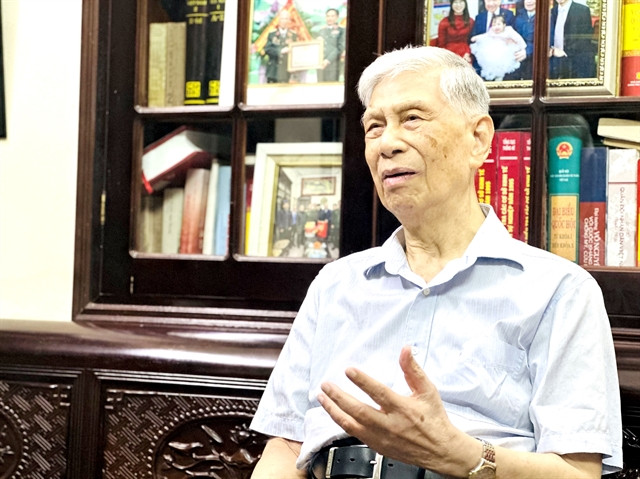
On the morning of September 2, 1945, Thụy stood with other Front members in Ba Đình Square.
“When Uncle Hồ asked: ‘Can you hear me clearly, compatriots?’, I, along with the entire square, roared back: ‘Yes!’” he recalled, voice trembling with emotion.
The resolve of a young State
When recalling the fortitude of the Government in those early days, eyewitnesses affirmed that famine was pushed back in a remarkably short time.
“Responding to President Hồ Chí Minh’s call, the entire nation joined movements like ‘Skip one meal a day,’ ‘Break open the Japanese rice warehouses to save the starving’ and shared every handful of rice, every bowl of porridge with one another,” Tài remembered.
Within just a few months, the country held its first general election to choose deputies for the National Assembly of the Democratic Republic of Việt Nam. From that assembly emerged a new Government and the first Constitution of an independent Việt Nam was adopted.
Yet even this landmark event faced sabotage. As tens of thousands of voters in Hà Nội exercised their civic duty, reactionary forces attempted to disrupt the election. In Ngũ Xá, they brought in machine guns to block residents from voting, banned the hanging of red flags with golden stars and tried to prevent ballot boxes from being placed.
“Back then, the Constitution and State structure were still unfamiliar concepts. But the words Independence and Unity were enough for people to give their wholehearted support,” Thụy recalled emotionally.
Eighty years after Independence Day, the world increasingly recognises the global significance of the birth of the Democratic Republic of Việt Nam, the predecessor of today’s Socialist Republic of Việt Nam. Kostantin Ilyich Mogilevsky, Russia’s Deputy Minister of Science and Higher Education and Co-Chairman of the Russian Historical Society, emphasised that for the first time in Asian history, Việt Nam’s national liberation movement toppled colonial rule on its own, opening a new future for the nation.
“Today, this precedent carries profound relevance,” he said.
Marching to the Battlefield
Less than a year after independence, the French army returned, plotting to re-establish Việt Nam as a colony. Confronted with this threat, the entire nation entered the resistance against France.
On behalf of the newly-formed Government, President Hồ Chí Minh solemnly pledged to lead the people in a war of resistance to preserve independence and freedom.
For nine long years, the Vietnamese military and people fought relentlessly, culminating in the resounding Điện Biên Phủ Victory on May 7, 1954, forcing France to sign the Geneva Accords, ending the war in Indochina.
Colonel Nguyễn Hữu Tài, then Political Commissar of Regiment 209, Division 312, took part in that campaign. He explained that the battle was far more than 56 days and nights. Including the marches, hauling artillery in and out, digging fortifications and fighting, the campaign lasted 120 days and nights.
“How could I forget the scene where we carved paths for artillery through hairpin bends. Our hands burned as we ripped strips from our own pants to use as padding, dragging those two-tonne steel guns up 60-degree slopes with an abyss yawning on the other side,” Tài recalled.
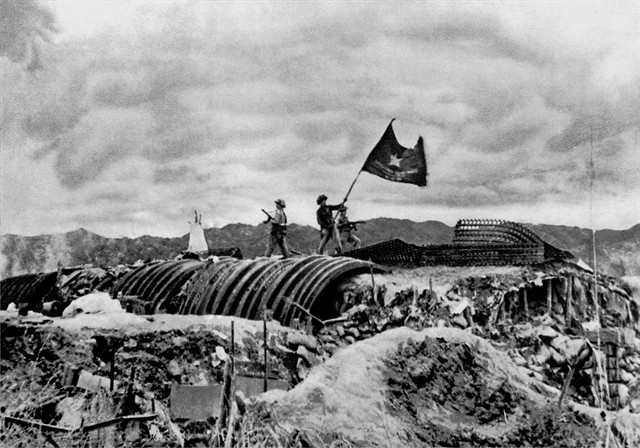
The attack on Him Lam fortification remains etched in his memory. That afternoon, the regimental command read aloud Uncle Hồ’s letter and General Võ Nguyên Giáp’s order, before soldiers carved the words ‘Determined to Fight, Determined to Win’ into their rifle stocks. It was also the first time in the army’s history that a performance troupe entertained troops right before battle.
“The music and the song Chiến Sỹ Việt Nam (Vietnamese Soldiers) rang out with the thunder of artillery and anti-aircraft guns. Then, as the order came, our troops surged forward. No one thought of life or death. It was only the burning spirit of victory,” Tài said, his voice trembling with pride.
That epic concluded when Tài and the Regiment 209 Commander stood face-to-face with General De Castries, who had his head bowed, eyes averted, with his general’s insignia gleaming on his shoulders. For Tài, that image embodied the total defeat of an arrogant enemy and the triumphant climax of a nation’s struggle.
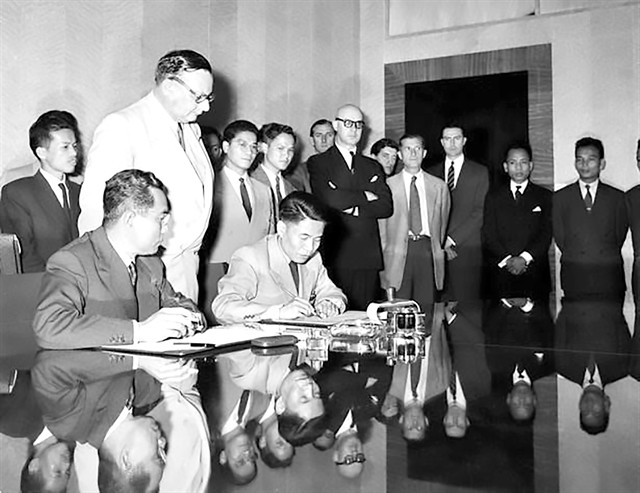
Following the Điện Biên Phủ Victory, the Geneva Accords of 1954 were signed, forcing France to withdraw from Indochina and paving the way for national reunification elections. But the United States intervened, installing Ngô Đình Diệm in the South, refusing consultations and tearing up the accords.
Thus, one half of the country embarked on building socialism, while the other became a US military stronghold.
The ensuing two-decade-long resistance against America was a saga of yearning for unity and peace, yet steeped in immense sacrifice and pain.
From Ấp Bắc, the 1968 Tết Offensive, Route 9 – Southern Laos, 81 Days of Quảng Trị Ancient Citadel and the 12 Days and Nights of Hà Nội’s air battle, to the Paris Peace Accords of 1973, each victory brought the nation closer to its day of ultimate triumph.
And on April 30, 1975, the Hồ Chí Minh Campaign, the final and most decisive offensive of the 1975 Spring General Offensive and Uprising, ended in resounding success. As the national flag soared atop the Independence Palace, 21 years of resistance against US aggression came to a close, sealing the reunification of Việt Nam.
Amid that triumphant tide of history, an unforgettable image remains: the Liberation Flag soaring proudly over the roof of Bến Thành Market on the day of total victory. That moment belongs to Phan Thị Bé Tư (alias Phan Thị Định, born in 1948), a former political prisoner on Côn Đảo and a living witness to history.
After five long years of imprisonment and torture, Bé Tư was exchanged to the Provisional Revolutionary Government of the Republic of South Việt Nam under the Paris Peace Accords. Soon after, she joined the Hồ Chí Minh Campaign and carried out the mission of planting the Liberation Flag atop Bến Thành Market.
“That moment was a smile through tears,” she recalled. “I cried for the joy of a reunified homeland and for those who had fallen, including my younger brother who died in his twenties.”
But behind that historic triumph lay an ocean of sacrifice: over 1.1 million of the nation’s finest sons and daughters laid down their lives; more than four million civilians across North and South perished or were maimed for life by bombs and bullets.
Choosing Renewal, choosing the future
“It’s unimaginable. Without Đổi Mới (Renewal), Việt Nam would never look the way it does today,” says Phùng Huy Thịnh, born 1953, former officer of the Political Department of Corps 2, as he reflected on the sweeping reforms launched by the Party in 1986 and the transformation they unleashed.
From his modest second-floor home on Lạc Long Quân Street, Hà Nội, Thịnh recalled those difficult years. After the war, he returned to civilian life with the mindset of going back to school, graduating and helping rebuild the country.
But Việt Nam then was in crushing hardship, with a war-ravaged economy shackled by a centrally planned system: low productivity, stagnant production and skyrocketing inflation.
Statistics from the General Statistics Office show that in 1986, inflation reached an astonishing 774.7 per cent, while the US embargo, in place since 1975, further strangled the economy.
Former Vice Chairman of the National Assembly Lieutenant General Đặng Quân Thụy recalled: “We were healing war wounds, fighting hunger and poverty, coping with sanctions, while still fulfilling international duties and defending our borders for nearly a decade.”
Life was rationed and harsh.
“Coupons for everything: food, oil, fabric. Blackouts, water shortages, rice scarcity. I was then Commander of the Chemical Corps, living on Trần Phú Street. My kids queued for hours for food and kerosene. Sometimes during a meal, rain poured through the roof and I had to climb up to patch leaks.”
In that dire context, the 6th National Party Congress made a historic decision: Đổi Mới (Renewal).
“It was a turning point, a bold escape from crisis. In 1986, we moved from a subsidy-based economy to a socialist-oriented market economy,” Thụy said.
But change was anything but easy. Former Foreign Minister Nguyễn Dy Niên, now 90, still remembered the fierce debates inside the Party.
“Yet our Party declared: choosing Đổi Mới is choosing the future,” Niên said.
The first breakthrough came in agriculture with Resolution 10, signed by General Secretary Nguyễn Văn Linh, reforming agricultural management, liberating labour and boosting rice productivity.
Within a few years, Việt Nam escaped crisis. GDP grew 4.4 per cent, agriculture 4 per cent, and exports surged 28 per cent annually. From chronic hunger, Việt Nam became a leading exporter of rice, coffee and seafood.
For two decades, the economy sustained 7–8 per cent growth annually, weathering the Asian financial crisis and natural disasters. This was a critical leap in the industrialisation and modernisation era.
The transformation was profound. Life expectancy climbed from 66 in 1986 to over 74 today. Literacy is near universal. Household income increases sixfold. Extreme poverty is nearly eradicated.
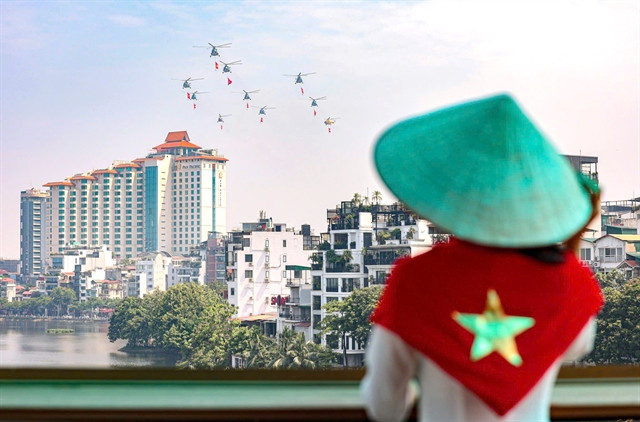
Ramla Khalidi, UNDP Resident Representative in Việt Nam, called this an impressive achievement towards the Sustainable Development Goals, making Việt Nam a model for other nations.
Manuela V. Ferro, World Bank Vice President for East Asia and Pacific, added that a cornerstone of Việt Nam’s success was the bold decision in the 1980s to open its economy and prioritise exports.
Aspiration for prosperity
Today, Việt Nam’s economic growth has reached remarkable milestones. In 2024, the nation’s GDP approached US$450 billion, while exports soared to $700 billion, placing Việt Nam among the top 20 trading economies in the world.
Fully integrated into the global economy, Việt Nam has signed 17 free trade agreements with over 60 countries and territories and participates in 70 bilateral cooperation mechanisms, opening the door for Vietnamese goods to reach more than 220 markets worldwide.
Recently, the International Monetary Fund (IMF) projected that within four years, Việt Nam will become the 32nd largest economy in the world. Meanwhile, the Centre for Economics and Business Research (CEBR) forecasts that by 2036, Việt Nam will rank 20th globally. Many international organisations describe Việt Nam’s economic growth story as nothing short of a miracle.
From a poor economy with triple-digit inflation and limited global ties, Việt Nam today, 80 years after independence, stands as a trusted partner of major powers, the 34th largest economy in the world, and a nation where people enjoy a life of stability and prosperity.
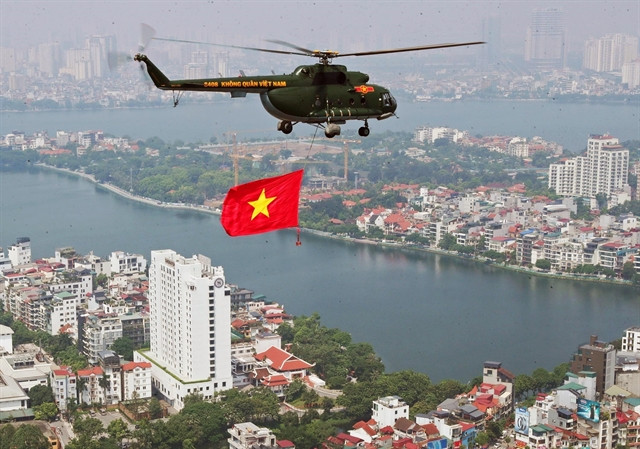
The journey of Đổi mới (Renewal) and the path to continued progress in the new era still face many challenges. Yet, the decision to embrace reform nearly 40 years ago has proven visionary, laying the foundation for a strong, confident future.
The 13th Party Congress Resolution reaffirms this ambition, setting the goal for Việt Nam to become a high-income developed country by 2045.
That determination grows even stronger with the recent adoption of four landmark resolutions, serving as the guiding compass for national development in the new phase. Among them is Resolution No 68-NQ/TW on private sector development, calling for bold reforms to create a comprehensive shift in economic policy and unleash the full potential of private enterprises.
Party General Secretary Tô Lâm emphasised that this is a strategic, urgent and long-term choice. It is a choice to realise the aspiration of building a prosperous and powerful Việt Nam by the mid-21st century.

